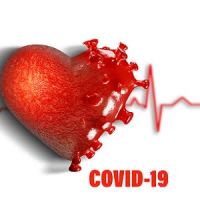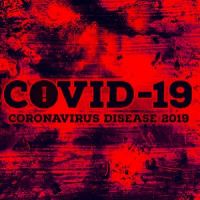Coronavirus disease has caused havoc around the world. There are more than 300 clinical trials underway for this illness, but so far, no specific therapies have demonstrated the ability to decrease mortality. Since there is no therapeutic cure for COVID-19, authorities across the globe have implemented aggressive mitigation strategies to stop the spread of infection.
There is no doubt that physical distancing measures have played a role in curtailing the spread of COVID-19, especially since healthcare workers were afraid of hospitals becoming overwhelmed if such measures were not taken. Their fears are justified, but at the same time, these fears may also be causing significant harm.
Death toll from COVID-19 continues to increase, but at the same time, there are numerous patients with the COVID-19 infection who have recovered. If we look at the numbers, mean infection fatality rates are low. Also, mortality risk from COVID-19 is heterogeneous across age groups and comorbid conditions. But the mitigation strategies that are implemented to slow the spread of the virus may lead many people to delay essential care for themselves or their loved ones.
If we take cardiac disease as an example, we will see the hazards that are associated with COVID-19 and the world's initial response. Patients with myocardial infarction who are not being treated with timely reperfusion therapy, rates of sudden death, stroke, and mechanical complications are likely to increase. If we look at New York, emergency calls for cardiac arrests have increased quite substantially in the weeks since COVID-19. If these fears and social distancing measures continue, morbidity and mortality associated with myocardial infarction are likely to increase.
When it comes to cardiac events, disasters tend to increase the risk. Fear and stress can precipitate acute coronary syndromes. Psychological distress is also known to increase event rates, and in the case of COVID-19, a sedentary lifestyle, increased rates of smoking and other similar factors can also increase the risk.
It is estimated that the COVID-19 pandemic could result in 1 million to 2 million additional coronary events that are directly attributable to the crisis. If we add patients who are avoiding seeking care, this can further increase the morbidity and mortality associated with cardiac disease and which is directly linked to coronavirus.
It is important to provide care to patients with cardiovascular disease, pandemic or no pandemic. The risk of acquiring a COVID-19 infection in the hospital is less than 1%. The mean risk of death from the virus is less than 1%. In contrast, the probability of dying of myocardial infarction without evidence-based treatment is more than 30%. The mean risks associated with cardiac events are much greater and clearly outweigh the risk of infection from COVID-19.
It is thus important to provide appropriate medical care to patients who need it while encouraging the general public to stay at home. The image of the hospital should not be depicted as that of a war zone because this can put patients with cardiovascular disease in fear, and they may not seek the treatment they urgently need. It is important to implement measures to contain COVID-19, but at the same time, it is equally important to keep patients from dying of fear.
Source: JAMA Cardiology
Image Credit: iStock



























